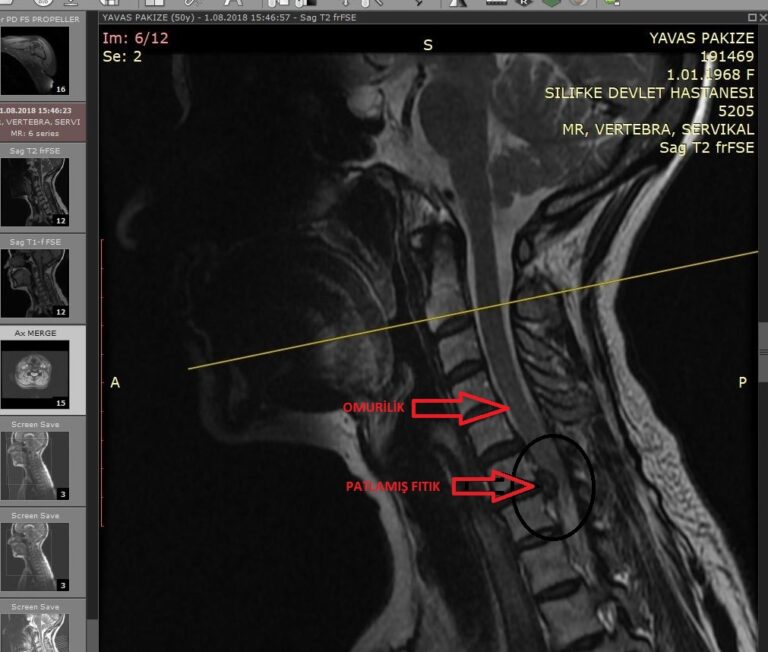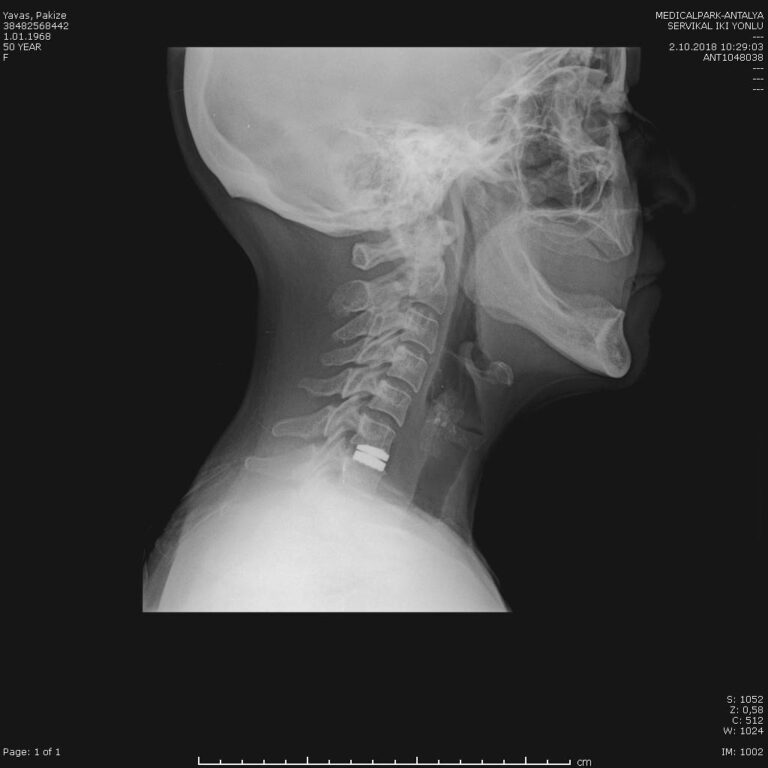Cervical Disc Herniation

Cervical Disc Herniation (Cervical Disc Herniation)
There are seven vertebrae in the neck. Between the vertebrae is a cartilage called a disc, starting between the second and third vertebrae. The neck has the flexibility to turn our head in all directions and is a structure that supports the weight of the head.
These movements are achieved through the discs and joints located between the vertebrae. The spinal cord passes through the cervical vertebrae. Nerves that control the movement of the arm muscles and provide sensation to the arms exit through the openings between the vertebrae.
The disc material consists of a relatively hard outer sheath between two vertebrae and a gel-like soft tissue interior. When the outer sheath weakens or ruptures, the inner portion shifts outward, putting pressure on the nerves.
While weakening or tearing of the outer layer of the spine primarily causes neck pain, a cervical disc herniation, defined as the displacement of the inner layer outward, puts pressure on the nerve root, causing pain that radiates to the shoulder and arm. Arm pain is often more severe than neck pain because of the pressure on the nerve roots. Depending on the level of pressure on the nerve roots, weakness and numbness in the arm and hand muscles may also occur.
Cervical Disc Herniation Treatment
Which Patients Undergo Surgery?
- Patients with persistent pain (severe pain radiating to the arm due to pressure on the nerve root)
- Patients who develop loss of strength due to pressure on the nerve root
In surgery, the protruding hernia between the vertebrae is removed, the nerves and spinal cord are relieved, and a disc prosthesis is placed between the vertebrae to preserve movement.


